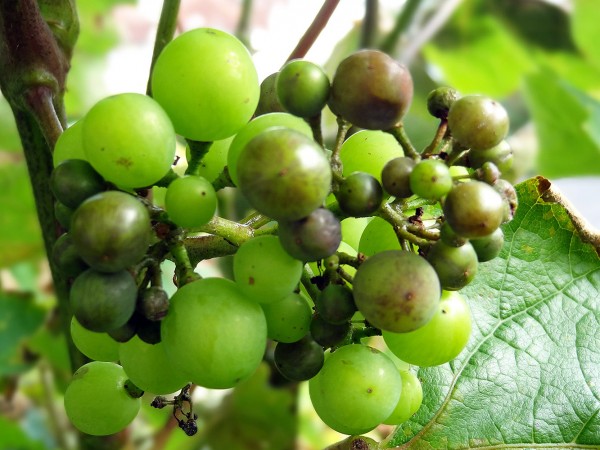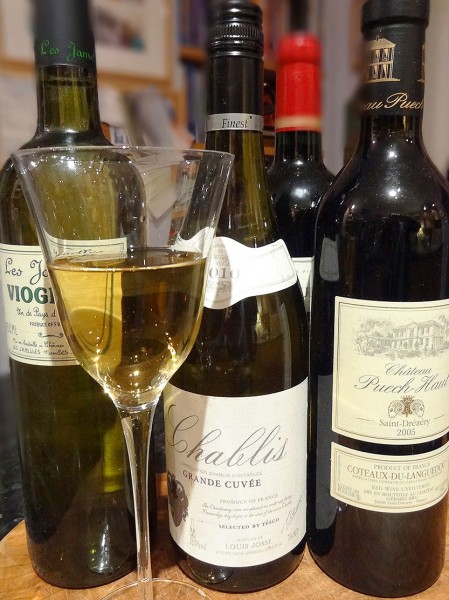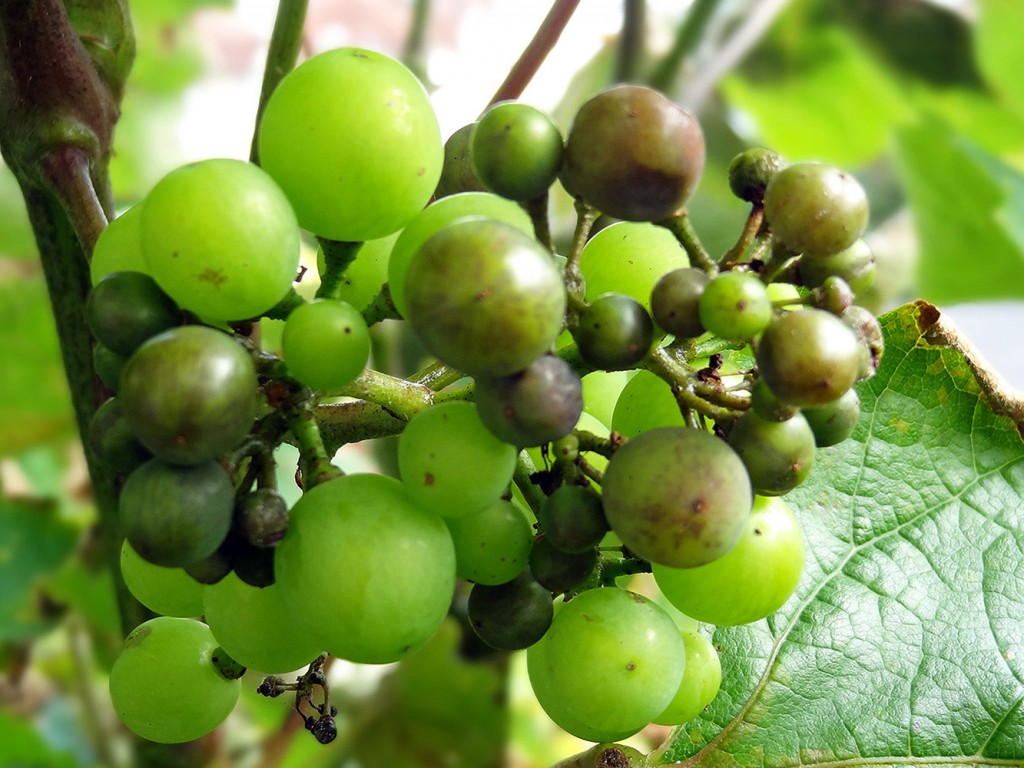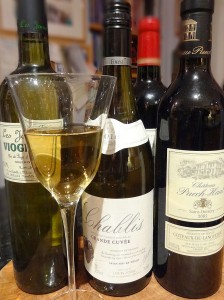 The model of demand and supply is one of the first diagrams that any student of Economics will see and it’s a very important model. We can apply it to a multitude of markets and understand how market prices for products and services are determined. One such market is that of wine, where a recent report suggests that wine is in short supply. Bad news for everyone!
The model of demand and supply is one of the first diagrams that any student of Economics will see and it’s a very important model. We can apply it to a multitude of markets and understand how market prices for products and services are determined. One such market is that of wine, where a recent report suggests that wine is in short supply. Bad news for everyone!
The price of wine is set by the interact of demand and supply. As with any market, numerous factors will affect how much wine is demanded at any price. Since 1996, global consumption of wine has been on the increase: for many, wine is a luxury good and thus as income rises, so does consumption. With the emergence of markets, such as China and subsequent income growth, consumption has risen. Furthermore, tastes have changed such that wine is becoming an increasingly desirable drink. So, this has all led to the demand curve shifting to the right.
 However, at the same time, the supply of wine has been falling, largely the result of ‘ongoing vine pull and poor weather’ across Europe. European production has fallen by around 10% over the past year and although production in other countries has been rising, overall production is still not sufficient to match the growth in demand.
However, at the same time, the supply of wine has been falling, largely the result of ‘ongoing vine pull and poor weather’ across Europe. European production has fallen by around 10% over the past year and although production in other countries has been rising, overall production is still not sufficient to match the growth in demand.
So, what’s the result of this high growth in demand combined with the decline in supply? A shortage of wine. A report by analysts at Morgan Stanley suggests that the global wine shortage was some 300m cases in 2012. But, more importantly what is the effect of this shortage? When demand for a product exceeds the supply, the market mechanism will push up the price. As stocks of wine continue to be depleted and consumption of wine keeps rising, the only outcome is a rise in the price of a bottle and a crate of wine.
Concerns are also being raised about the future of prices of some of our other favourite luxury products, such as chocolate, goats cheese and olives. In each case, it’s all about demand and supply and how these curves interact with each other. The following articles consider the prices of some of these products.
Wine shortage: the top five wines to drink – before they run out The Telegraph, Susy Atkins (30/10/13)
World faces global wine shortage – report BBC News (30/10/13)
Luxury food shortage scares – should we believe the warnings? The Guardian, Emine Saner (5/11/13)
The global wine ‘shortage’ Napa Valley, Dan Berger (8/11/13)
Global Shortage of wine beckons Independent, Felicitiy Morse (30/10/13)
The global wine shortage is about to get worse (if you like Bordeaux) TIME World, David Stout (6/11/13)
Have no fears about a world wine shortage – the glass is still half fulll The Telegraph, Victoria Moore (31/10/13)
Drink it while you can, as study points to looming wine shortage Associated Press (31/10/13)
Don’t waste a drop! Wine prices to rise as demand grows Mail Online, Amie Keeley (31/10/13)
Questions
- Use a demand and supply diagram to illustrate how the market price for wine (or any other product) is determined.
- Why does the demand curve for wine slope downwards and the supply curve of wine slope upwards?
- Which factors will affect (a) the demand and (b) the supply of wine?
- One the diagram you drew in question, illustrate a shortage of wine. How will the price mechanism work to restore equilibrium?
- Why does the Morgan Stanley report suggest that a wine shortage might emerge?
- What suggestions are there that there is no wine shortage?
 European wine producers have seen one of the worst grape harvests for decades. With exceptionally wet weather in the northern European growing areas and exceptionally hot and dry weather in the southern ones, yields are well down in most countries.
European wine producers have seen one of the worst grape harvests for decades. With exceptionally wet weather in the northern European growing areas and exceptionally hot and dry weather in the southern ones, yields are well down in most countries.
In France, the world’s largest wine producer, wine production is forecast to be 19% down on the previous year. In Italy and Spain, Europe’s second and third largest producers, production is forecast to be 3% and 6% down respectively. Production in the EU as a whole, which produces some 57% of world output, is expected to be 9% down and at a historically low level. What is more, the past five years in the EU have all seen modest harvests.
And the poor harvests are not confined to Europe. Argentina’s production is some 24% down on 2011, with New Zealand’s 17% down. And despite a few countries expecting an increase, including the USA and Chile, overall world production is expected to be 6% down on 2011 and more than 7% down on the average for 2008–11.

So is this good news or bad? At first sight it would seem to be bad, especially for the countries with large falls in output. It would also seem to be bad news for the consumer, with prices set to rise.
But for some it’s good news. If prices rise, then producers experiencing an increase in output will have a double gain. And a fall in output is only part of the story. For some producers, the smaller yield has been accompanied by an increase in quality. And then there’s the question of stocks. For several years, global production of wine has exceeded consumption. Indeed the gap widened after the financial crisis and recession of 2007–9 as consumption of wine fell. This year’s poor global harvest should help to slow down the increase in stocks or may even lead to a reduction in stocks, depending on the extent to which demand recovers.
Articles
World Wine Output to Fall to 37-Year Low, Depleting Stocks BloombergBusinessweek, Rudy Ruitenberg (30/10/12)
World wine drought after weather ruins harvests The Telegraph, John-Paul Ford Rojas (31/10/12)
Wine Experts: Drought, Cold Bring Worst Harvest in 50 Years Skye (30/10/12)
Wine experts: worst grape harvest in half century Washington Examiner (17/10/12)
Small 2012 harvest sparks supply fears thedrinksbusiness.com, Gabriel Savage (30/10/12)
Wine shortage to follow poor 2012 grape harvest BBC News (31/10/12)
 Hot summer cools business prospects for Madrid vintners BBC News, Jaime Gonzales (24/9/12)
Hot summer cools business prospects for Madrid vintners BBC News, Jaime Gonzales (24/9/12)
World awash in wine, so Europe’s poor grape harvest won’t hit Edmonton goblets just yet Edmonton Journal, Dan Barnes (17/10/12)
Data
Wine in figures Wines from Spain
2012 global economic vitiviniculture data Wines from Spain (Note that the countries in Table 1 have been entered in the wrong order.)
Questions
- Illustrate the effect of the global wine harvest on a demand and supply diagram.
- Will a fall in grape production of x per cent lead to a rise in the price of wine of more or less than x percent? How is the price elasticity of demand relevant to your answer?
- What elements are there in the supply chain from planting vines to consuming wine?
- How does the holding of stocks affect (a) the profitability of wine production; (b) the price volatility of wine?
- The Greek grape harvest is predicted to be higher in 2012 than in 2011. How will this affect the prices of Greek wines in (a) Greece; (b) outside Greece?
- How is the fallacy of composition relevant in assessing the benefits to owners of vineyards of a good grape harvest?
We frequently hear about two companies merging with each other, whether for certainty, market share or economies of scale. However, in this case, we’re looking at a de-merging of one company to create two companies. Foster’s will be split to create two stand-alone companies.
With Foster’s retaining its beer business, a new company called Treasury Wine Estates will take over its ailing wine division. This split comes after 99% of investors cast their votes in favour of the split. The future profitability of this demerger is uncertain and how the stocks of the two separate companies trade in the coming months will give a clear indication of whether or not this divorce is the right move.
Foster’s votes to split beer and wine business Telegraph, Richard Fletcher and Jonathan Sibun (29/4/11)
Investors agree to split Foster’s into beer, wine units BBC News (29/4/11)
Two halves: Foster’s to split its beer and wine operations Mail Online (29/4/11)
Foster’s wine-beer demerger to clarify divisions’ value The Australian (30/4/11)
Questions
- What type of de-merger could we call this?
- How do you think the share prices of the 2 separated companies will fare following the de-merger?
- How concentrated is the beer and wine market? What effect will the de-merger have?
- In the BBC News article, Donald Williams says ‘The wine business needs a better pricing environment before it is likely to perform.’ What does this mean?
- Why has the wine division been a financial drain for so long?
 The model of demand and supply is one of the first diagrams that any student of Economics will see and it’s a very important model. We can apply it to a multitude of markets and understand how market prices for products and services are determined. One such market is that of wine, where a recent report suggests that wine is in short supply. Bad news for everyone!
The model of demand and supply is one of the first diagrams that any student of Economics will see and it’s a very important model. We can apply it to a multitude of markets and understand how market prices for products and services are determined. One such market is that of wine, where a recent report suggests that wine is in short supply. Bad news for everyone! However, at the same time, the supply of wine has been falling, largely the result of ‘ongoing vine pull and poor weather’ across Europe. European production has fallen by around 10% over the past year and although production in other countries has been rising, overall production is still not sufficient to match the growth in demand.
However, at the same time, the supply of wine has been falling, largely the result of ‘ongoing vine pull and poor weather’ across Europe. European production has fallen by around 10% over the past year and although production in other countries has been rising, overall production is still not sufficient to match the growth in demand.

